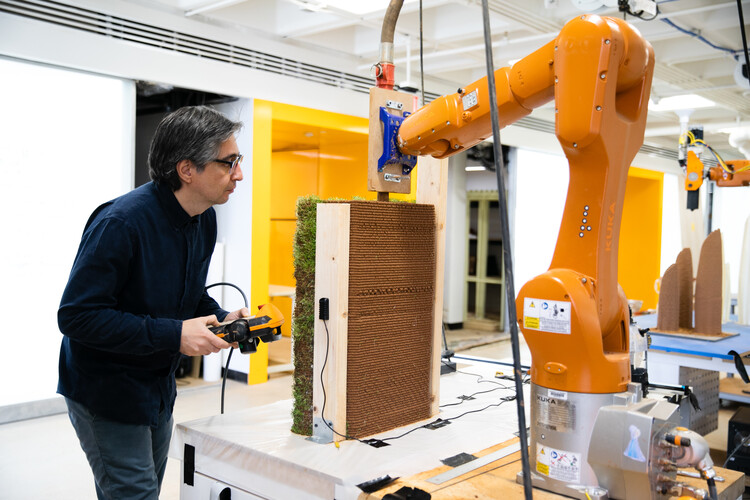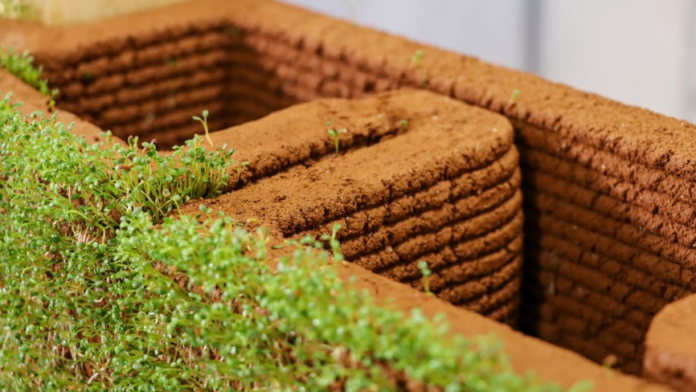[Photo by Ehsan Baharlou]
Article posted 8/18/22
Through a new approach to 3D printing, soil implanted with seeds can now be used as a concrete-like building material. Developed by a multidisciplinary team of researchers at the University of Virginia, this building technique could open up doors to a completely new kind of building, with finely tuned ecosystems of plants and bacteria forming the insulation, the structure, even the exteriors of homes.
The project Ma and his collaborators developed is less grandiose than a living house. The team focused on small dome-shaped structures made of soil implanted with seeds. Balancing the quantity of soil, water, and seeds, and accounting for the compaction of pumping them all through the nozzle of a 3D printer, the team managed to create a small dome that was soon blossoming.
Ma concedes that building with soil isn’t entirely new. “One of the oldest construction materials is soil,” he says, pointing to adobe buildings in the American Southwest and mud huts in Africa, for example. “People were building structures from soil long before they were building with concrete.”
Ehsan Baharlou, an assistant professor of architecture at UVA and a collaborator in this research, says this method could one day be used to print structures that incorporate a variety of soil and plant combinations, each serving a specific role in the way a building stands up or stays insulated. “We could change the material properties during fabrication in a way that you can have different kinds of functions,” he says. “You can have a green wall on one side and have structure on another side.”
Building with soil could also be a way to cut down the massive carbon footprint of buildings, particularly those made with carbon-intensive materials like concrete and steel. Embedding 3D-printed soil with plants could turn them into carbon sinks that absorb more CO2 than they produce.
Ma says the most immediate application for this technique may not be in buildings but in landscape architecture. How the soil is printed and how much water it’s supplied can effectively mimic different climate conditions in various parts of the world. “Potentially you have the ability to grow very different plant species that are normally adapted to different environments in the same place,” he says. “It has the potential for landscape architects to create menageries of different plant species, if you will,” he says.

Analysis
This article is interesting to me because it explores 3D printing materials in a new light. Rather than the typical plastic or concrete material, it explores the material of dirt and seeds and the possibilities of its applications in relation to 3D printing and building construction.
While concrete is considered to be a very sustainable material, its creation produces a considerable amount of CO2. And with concrete being one of the most used construction materials globally, it is refreshing to consider innovative new steps in the direction of sustainability. Homes made of dirt and living plants is a very interesting concept. However there would be many things to consider. Like “how would home-owners keep bugs and pests out?” And “what is the best way to add structural integrity?” I think a better application than home construction, would be landscape architecture and design.
Take-Aways
Additive manufacturing does not have to be all man-made unnatural materials – natural materials can help implement more sustainable design through biophilia
Additives to an extrusion mixture can drastically change the end result – opportunity here




